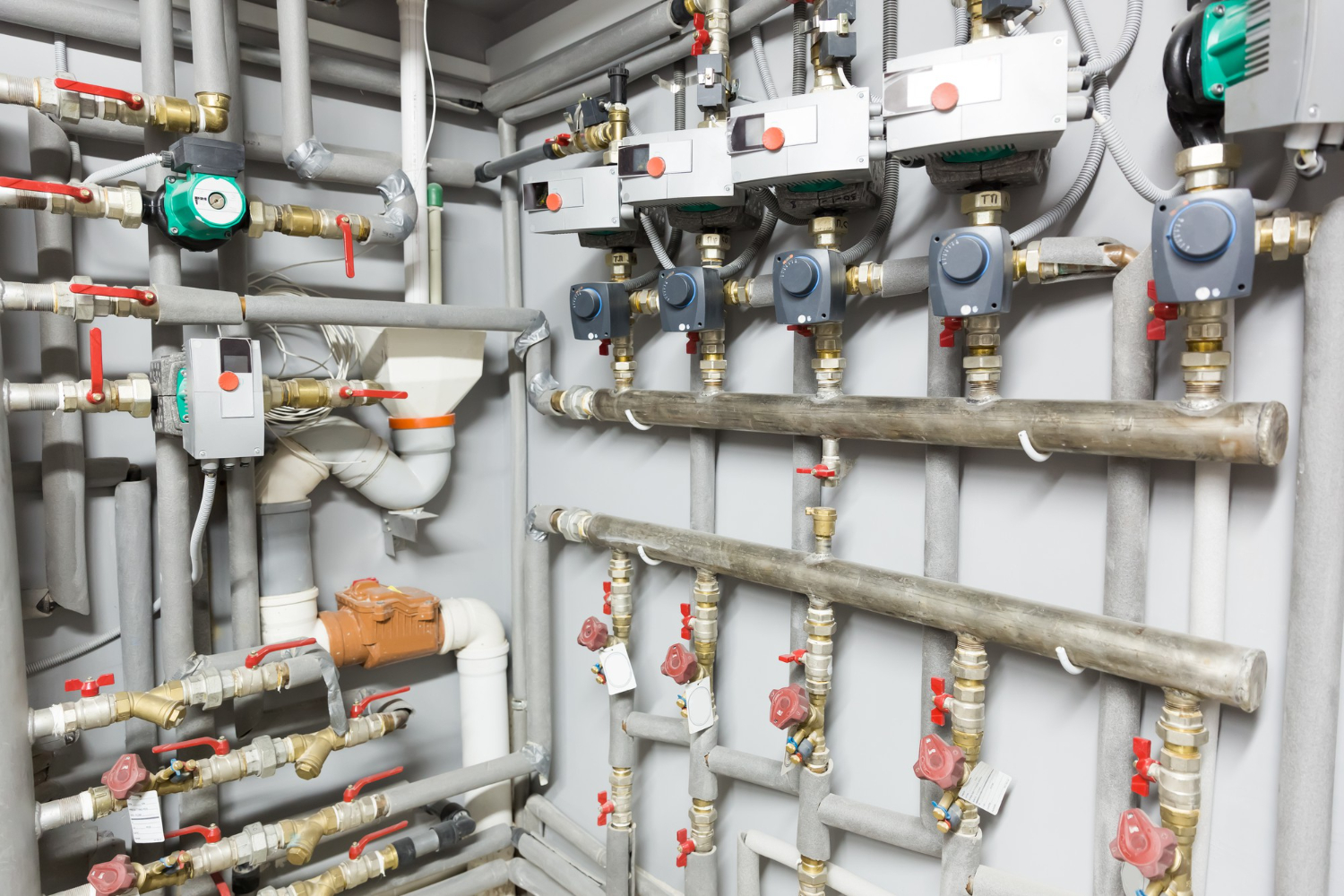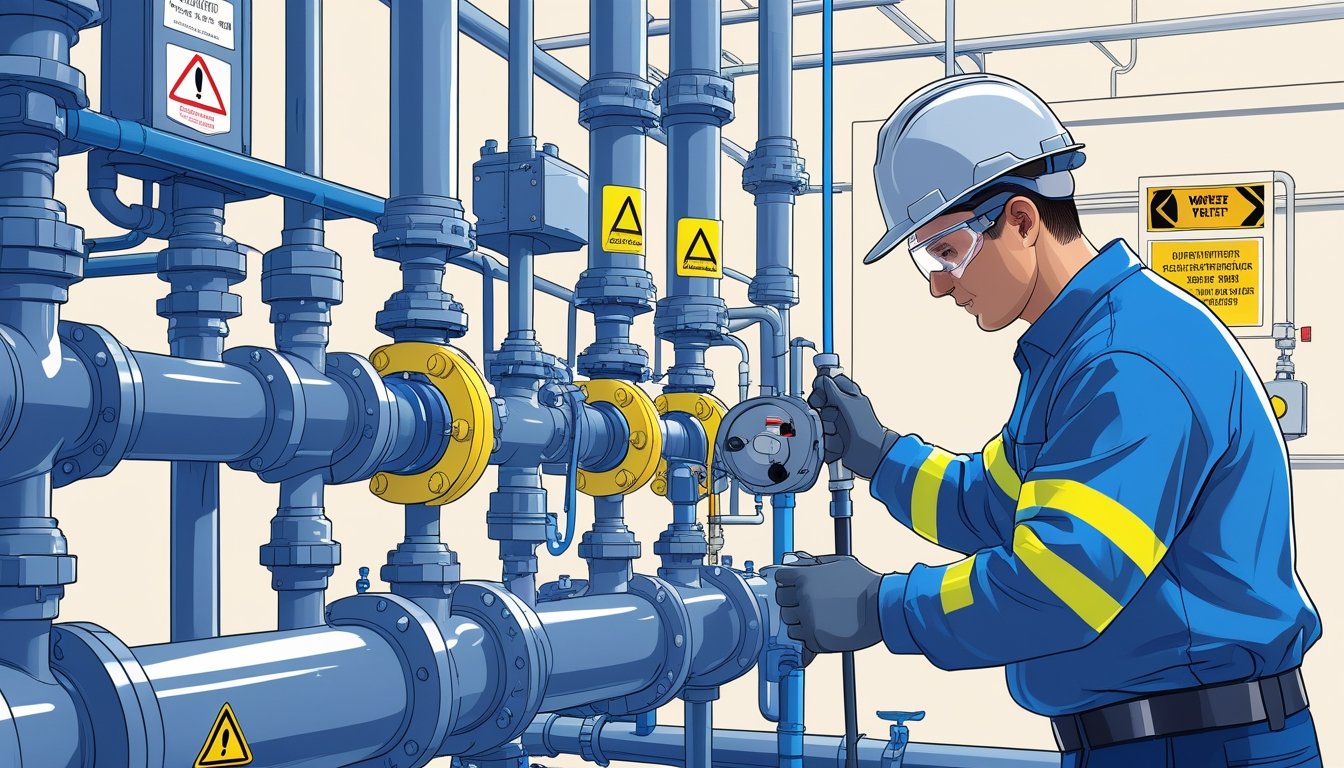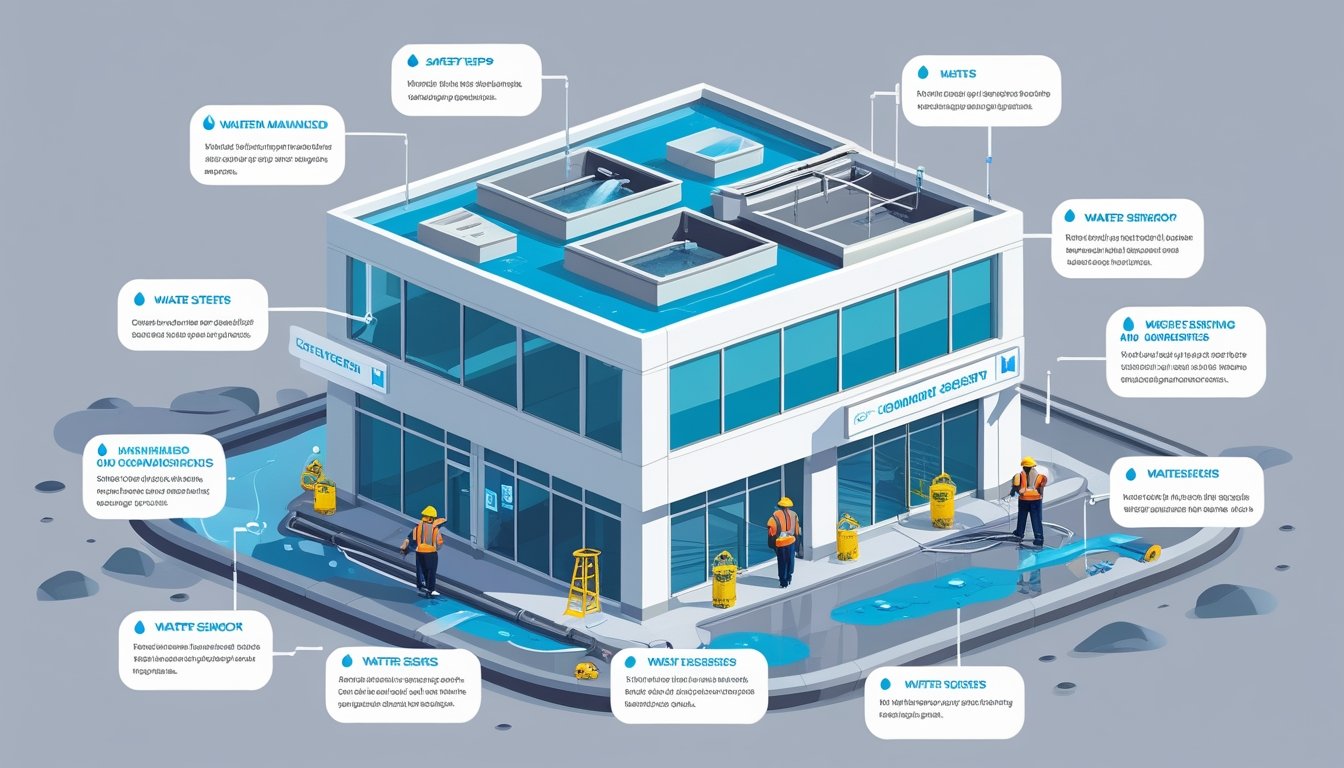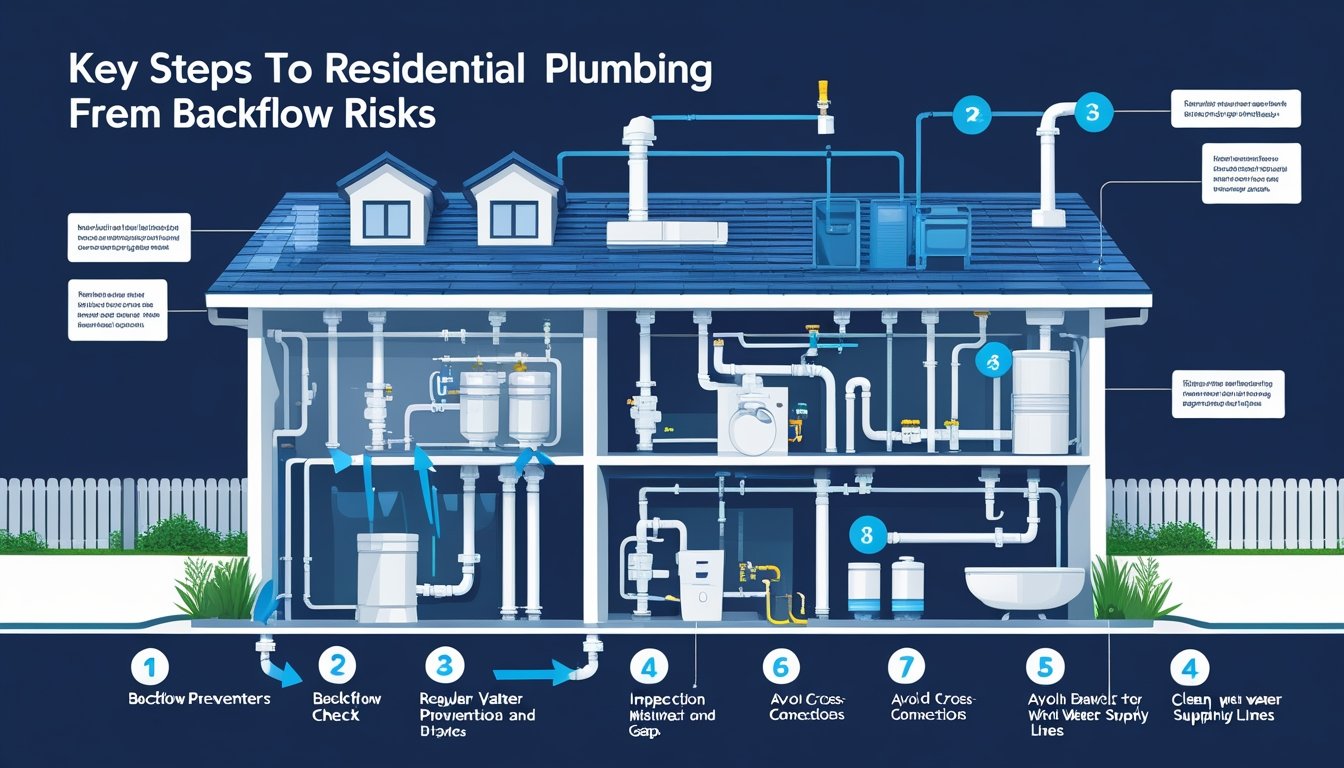Our certified backflow testing services ensure your plumbing system meets safety standards and prevents contaminated water from flowing back into clean water lines. We've been safeguarding residential and commercial properties through professional backflow testing for over two decades.
Backflow prevention is a crucial part of maintaining safe, clean water systems. These devices act as a one-way gate, stopping dirty water from mixing with your drinking water supply. Regular testing by qualified professionals helps catch any potential issues.
We specialize in testing all types of backflow prevention assemblies, including those used in irrigation systems and fire control. Our certified testers complete thorough inspections and provide detailed reports to verify your system's proper operation.
This guide explains what certified testing involves (from pressure and valve checks to documentation), who sets and enforces the rules, and how to choose the right assembly (RPZ, DC, PVB, AVB, or air gap) based on hazard level.
Here's what you need to know:
- Backflow prevention basics
- Certification and testing procedures
- Backflow testing in public and private sectors
- Maintaining certification and advanced knowledge
You’ll also learn the training and recertification standards for testers, what records authorities expect, and practical steps to keep irrigation and fire systems compliant with minimal downtime.
Backflow prevention basics
Clean water safety depends on proper backflow prevention systems that stop contaminated water from entering the drinking water supply. These systems require regular testing and maintenance by certified professionals to keep our water safe.
EPA’s Cross-Connection Control Manual identifies core program elements, legal authority, inspections/testing by certified personnel, enforcement, and recordkeeping, as the foundation for protecting drinking water from chemical or microbiological contamination. Local and state authorities define the specific device approvals and testing frequencies
What is backflow?
An EPA fact sheet explains that backflow is the unintended reversal of flow through a cross-connection, posing a serious public health hazard, and stresses the need for a formal cross-connection control and backflow prevention program to keep contaminants out of distribution systems.
Backflow happens when water flows in the opposite direction than intended in a plumbing system. This creates a risk of contaminated water mixing with clean drinking water. This dangerous situation can introduce chemicals, bacteria, or other harmful substances into the potable water supply.
The most common causes of backflow are:
- Back-siphonage: When negative pressure pulls contaminated water into clean pipes
- Back-pressure: When downstream pressure exceeds supply pressure, forcing water backward
Types of backflow prevention assemblies
Pressure Vacuum Breakers (PVB) work well for irrigation systems and are installed above ground. They prevent back-siphonage but not back-pressure.
Double Check Valve Assemblies protect two independent check valves. They're good for low-hazard applications like apartment buildings and fire sprinkler systems.
Other common types include:
- Reduced Pressure Zone Assemblies
- Atmospheric Vacuum Breakers
- Air Gap Devices
Each type serves specific purposes based on the risk level and installation requirements.
Regulatory framework for backflow prevention
Local water authorities require annual testing of backflow preventers by certified professionals, and most states follow guidelines from the Environmental Protection Agency (EPA) for water safety standards.
Building codes also specify which types of prevention devices must be used for different applications. Commercial buildings face stricter requirements than residential properties.
Testing requirements vary by location but typically include:
- Annual certification
- Documentation of test results
- Immediate repair of failed devices
- Registration with local water authorities
Certification and testing procedures
Backflow prevention certification requires specific training, testing, and ongoing education to ensure water safety standards are met. Certified testers must demonstrate both technical knowledge and hands-on skills.
Becoming a certified backflow tester
A minimum 40-hour training course is needed to start the certification process. The course covers essential topics in backflow prevention and testing methods. Students must pass a written exam with a score of 70% or higher. The exam typically includes 100 questions about backflow prevention principles and testing procedures.
Practical testing skills are evaluated through hands-on examinations, and students must demonstrate proper testing techniques on various devices.
Standard field test procedures
Field testing follows strict protocols to ensure accurate results, and we test each device component systematically to verify proper function. Testing procedures focus on identifying both working and non-working conditions of backflow assemblies. This helps prevent contamination of drinking water systems.
Common test procedures include:
- Pressure differential readings
- Relief valve operation checks
- Check valve assessments
- Shut-off valve verification
Recognized certifications and training providers
Several organizations offer recognized certification programs. The American Backflow Prevention Association (ABPA) and ASSE International are leading certification providers.
Each state sets its own rules for tester certification, and most areas require passing both written and hands-on exams. The ABPA provides nationally recognized certification programs, and many water districts accept ABPA certification alongside local requirements.
To maintain certification, testers must complete regular recertification requirements. This ensures skills stay current with industry standards. The International Code Council (ICC) provides comprehensive training resources and workshops, and these programs combine classroom learning with practical experience.
Backflow testing in public and private sectors
Certified backflow testing protects public health by preventing contamination of drinking water supplies, with specific rules for public and private water systems.
Residential vs. commercial applications
Backflow testing applies to many types of properties. Homes with irrigation systems need annual testing to protect drinking water, while commercial buildings require more frequent testing due to higher risk factors.
Common testing locations include:
- Office buildings
- Restaurants
- Apartment complexes
- Hotels
- Manufacturing facilities
Most properties need testing once per year, but some high-risk facilities may need more frequent checks based on local regulations.
Obligations of water purveyors and certified testers
Water purveyors must track and enforce testing requirements, maintaining records of backflow devices in their service areas.
Key responsibilities of certified testers:
- Follow approved testing procedures
- Submit accurate test reports
- Keep current certification
- Use calibrated testing equipment
- Report failures immediately
Maintaining certification and advanced knowledge
Professional backflow testers need to stay current with industry standards and maintain their certifications through ongoing education and testing requirements.
Continuing education for backflow testers
Certified backflow testers must complete specific continuing education hours annually to keep their certification active. Most states require 4-8 hours of annual training focused on new testing procedures and equipment updates.
The ASSE certification program requires testers to attend workshops and seminars covering cross-connection control methods and emerging technologies. These sessions help us master the latest backflow prevention techniques.
Training topics include:
- New testing equipment operation
- Updated safety protocols
- Changes in local regulations
- Advanced troubleshooting methods
The importance of recertification
Re-certification typically happens every 3-5 years, depending on state requirements. The process includes both written and hands-on testing components to prove continued competency.
During re-certification, testers must demonstrate:
- Proper gauge calibration
- Accurate device testing
- Thorough documentation practices
- Knowledge of current regulations
Many agencies now require proof of recent field experience, typically 10-15 tests per year, before allowing re-certification. This ensures testers maintain practical skills alongside theoretical knowledge. Active certifications show commitment to public safety and professional growth, and regular testing helps prevent certification lapses that could affect work eligibility.
Conclusion
Certified backflow testing is more than a checkbox, it’s the control point that keeps high-hazard processes, irrigation, and fire systems from contaminating your potable supply.
The playbook is straightforward: match the assembly to the hazard (RPZ/air gap for health hazards; DC/PVB where allowed), install it where it can be tested, drained, and protected, and maintain clean records that your water authority can verify in minutes. Treat failures as operational events, repair, retest, and submit results within the correction window.
To simplify compliance, bundle tasks: confirm device selection, perform the certified annual test, calibrate gauges, update tags and reports, and schedule the next due date before we leave. Ready to make your facility audit-ready with minimal downtime?
Schedule a certified backflow test. We’ll handle testing, documentation, and coordination with the water authority so your building stays safe and in code.
Get in touch to arrange an inspection of your backflow prevention system to ensure compliance.











